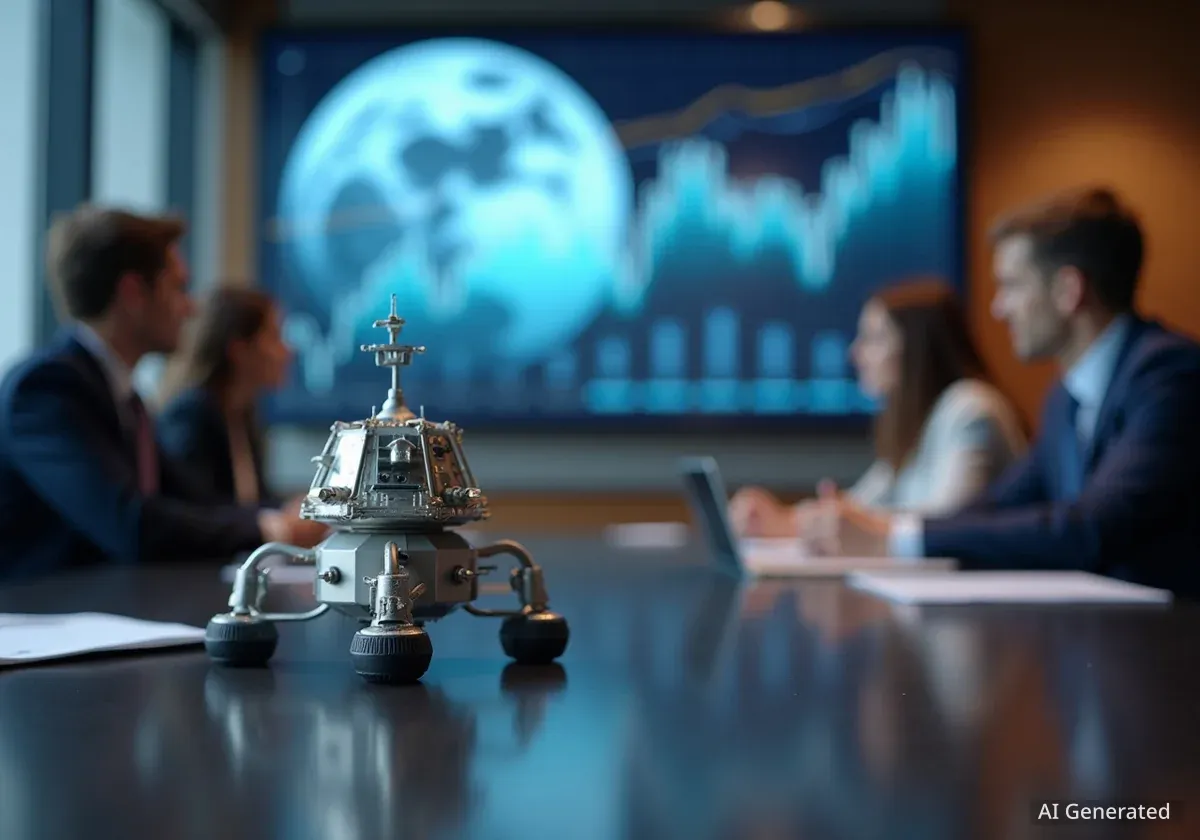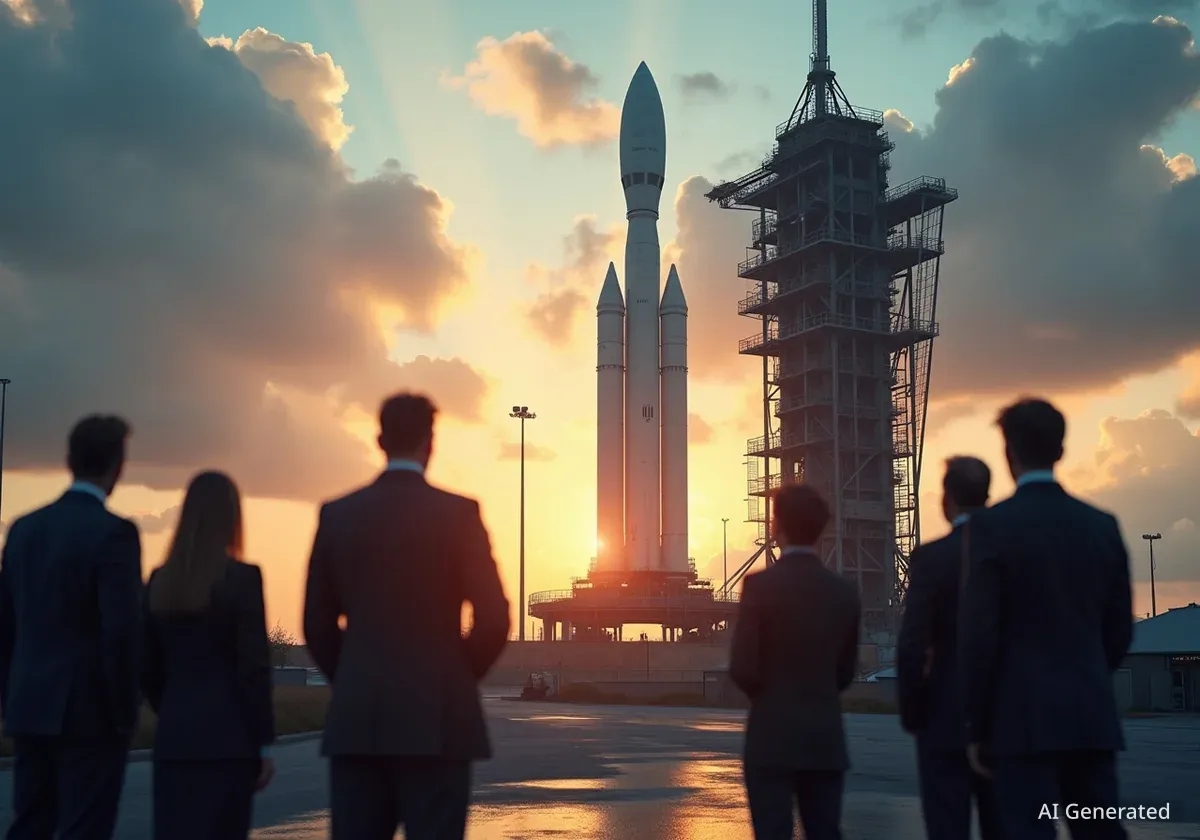The commercial space startup Interlune has entered into a significant agreement with Bluefors, a leading manufacturer of quantum computing cooling systems. The deal involves the future supply of Helium-3, a rare isotope to be harvested directly from the lunar surface, marking a major step in the emerging space resource economy.
Key Takeaways
- Interlune has agreed to supply quantum technology firm Bluefors with Helium-3 extracted from the Moon.
- The agreement, the largest of its kind for lunar resources, targets deliveries starting in 2028.
- Helium-3 is essential for the ultra-low temperature refrigeration systems required for quantum computers.
- Interlune, founded by former Blue Origin executives and an Apollo astronaut, plans a demonstration mission in 2027.
A Landmark Agreement for Lunar Resources
Interlune, a Seattle-based company, announced a partnership with Bluefors that establishes a framework for the first major commercial sale of a resource mined from the Moon. Under the terms, Bluefors has committed to purchasing up to 10,000 liters of Helium-3 annually from Interlune.
The supply contract is scheduled to run from 2028 through 2037. This arrangement represents the largest purchase agreement for lunar materials to date, signaling growing commercial confidence in the future of off-world resource extraction.
Rob Meyerson, co-founder and CEO of Interlune, commented on the partnership's significance. He highlighted the critical role Bluefors plays in the quantum technology sector.
"A majority of the quantum technology industry relies on Bluefors systems to operate and accelerate development. We are excited to help Bluefors continue advancing companies toward unlocking scientific and medical discoveries made possible only by near-absolute-zero temperatures."
The Growing Demand for Helium-3
Helium-3 is an isotope of helium that is extremely rare on Earth but is believed to be more abundant on the Moon. It has been deposited on the lunar surface over billions of years by solar winds.
Why is Helium-3 on the Moon?
The Sun constantly emits a stream of charged particles known as the solar wind. Unlike Earth, which is protected by a magnetic field, the Moon is directly exposed to this particle stream. Over eons, isotopes like Helium-3 have become embedded in the top layer of lunar soil, called regolith.
This resource is critical for several advanced technology sectors. Its primary application for Bluefors is in dilution refrigerators, which use Helium-3 to achieve the near-absolute-zero temperatures necessary for quantum computers to function properly. Without such extreme cooling, quantum bits, or qubits, lose their stability, making computation impossible.
The demand for Helium-3 is projected to increase significantly as the quantum computing industry expands. Other potential markets for this lunar resource include:
- National Security: Used in advanced sensor technologies.
- Medical Imaging: Serves as a contrast agent in certain MRI applications.
- Fusion Energy: Considered a potential fuel source for future fusion reactors.
Market Value of Helium-3
According to a 2024 estimate from The Edelgas Group, a specialty gas market analyst, Helium-3 trades for approximately $2,500 per liter. This high price reflects its scarcity on Earth, where it is primarily a byproduct of nuclear weapons maintenance.
Interlune's Plan to Harvest the Moon
Interlune was established in 2020 with the specific goal of mining lunar resources. The company's founding team includes prominent figures from the aerospace industry and space exploration history.
Its co-founders are Rob Meyerson, the former president of Blue Origin; Gary Lai, a former chief architect at the same company; and Harrison Schmitt. Schmitt, a geologist, was a member of the Apollo 17 crew and is the only living person to have walked on the Moon who was also a trained scientist. He has long advocated for the commercial use of lunar Helium-3.
To achieve its goals, Interlune has developed a detailed roadmap. The company has successfully raised over $18 million in venture capital to fund the development of its robotic harvesting technology. Its current timeline includes a demonstration mission in 2027, followed by the establishment of a pilot processing plant on the Moon by 2029.
Challenges and Uncertainties in Lunar Mining
While the agreement with Bluefors is a significant milestone, Interlune and the broader lunar mining industry face considerable obstacles. The technical challenges of designing, launching, and operating robotic equipment on the Moon are immense.
Furthermore, the logistics of extracting a gas from lunar soil, processing it, and preparing it for transport back to Earth have never been tested at a commercial scale. These operations will require substantial financial investment and carry a high risk of failure.
Some scientific experts also caution that the economic viability of Helium-3 mining is not yet proven. Although lunar samples from the Apollo and Soviet Luna missions confirmed the presence of the isotope, its concentration in the regolith is very low. It is still unclear how much Helium-3 is actually available and whether it can be extracted in commercially viable quantities.
Despite these uncertainties, the Interlune-Bluefors deal demonstrates a clear and growing demand from Earth-based industries for resources found in space. This partnership could be a pivotal moment, potentially accelerating the development of a true off-world economy.





